Welcome to the U-M Library’s digital magazine, which highlights stories from around the library, the library in the news, and upcoming events. A new edition is published at the start of each fall, winter and spring term.
Watch
Ever wonder how we go about acquiring some of our rare and unique materials? Hear the story behind the library's "first book," and about some of our more recent acquisitions.
Poet and Broadside Press founder Dudley Randall receives his due
African-American poet and publisher Dudley Randall left a legacy of achievement and influence when he died in 2000 at the age of 86. Nearly 20 years later, Randall was memorialized in the New York Times series Overlooked, which belatedly acknowledges the lives and legacies of important and influential figures from communities the paper has neglected since its founding in 1851.
Raised in Detroit, Randall published his first poem at the age of 13. In 1965, convinced that Black authors could not be accepted by white publications, he founded Broadside Press, which published his own work and that of hundreds of established and emerging Black voices (Gwendolyn Brooks, Robert Hayden, Nikki Giovanni). Broadside became an important venue for the Black Arts Movement. In its 50th year, Broadside Press merged with Lotus Press. Broadsheet Lotus Press is today the oldest African American publisher of African American poetry in the United States.
More/Less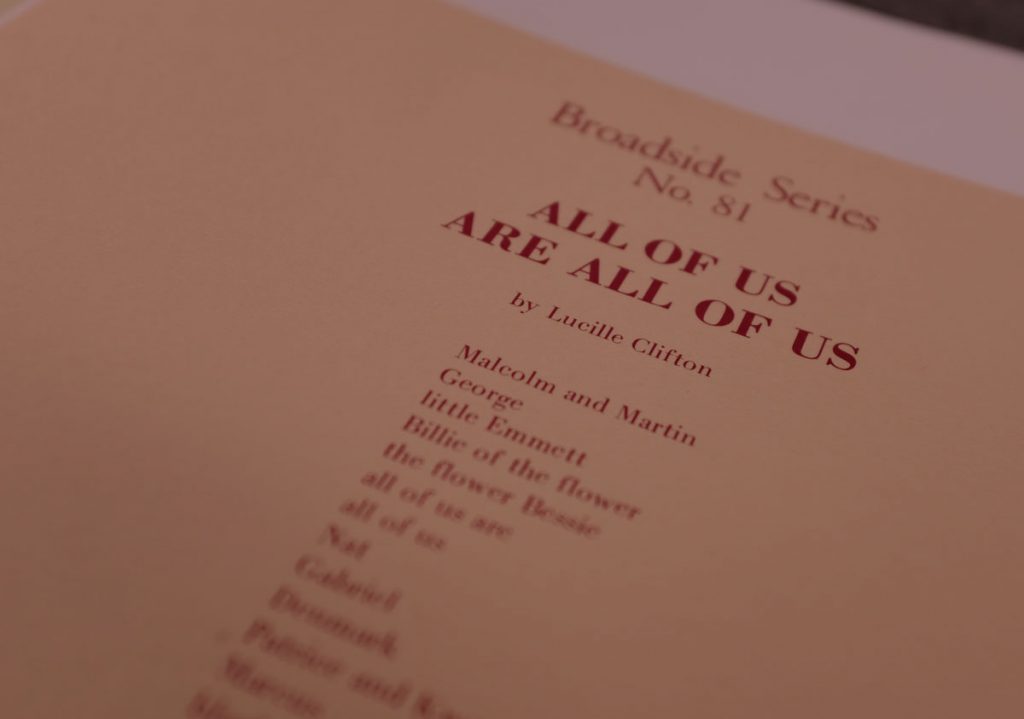
Among Randall’s many honors and awards was his appointment as Poet Laureate of the City of Detroit in 1981.
A U-M alum — he had a master’s in library science — Randall remains a presence on campus. His personal papers are at the Bentley Historical Library, and you can access the Broadside Press archive, which includes many of the original, limited edition broadsides and publications, via the U-M Library’s Special Collections Research Center. The documentary film The Black Unicorn: Dudley Randall & the Broadside Press is available from the Askwith Media Library.
Around the library
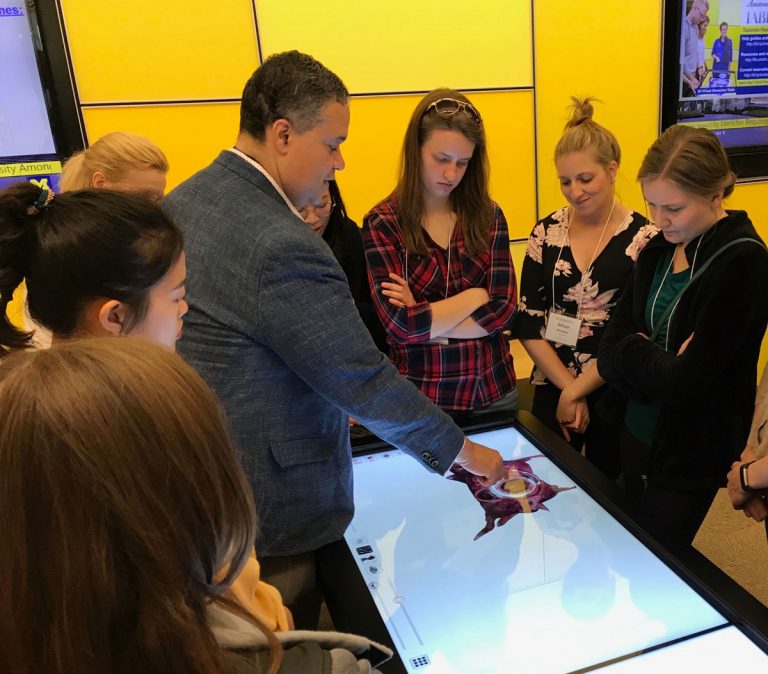
Photo by Kai Donovan
Making sense of sound
One of the gems of the Taubman Health Sciences Library is the Anatomage Table, a life-size, touchscreen visualization system that offers a 3D touchscreen experience for exploring and studying the human anatomy. It’s used by leading medical schools and institutions to educate a range of students and future practitioners in the health sciences.
You might expect to see medical students or undergraduates in science classes visiting the Anatomage Table, but how about flautists?
This summer, 15 flute players took a trip to the library to explore the table. They were visiting Ann Arbor to take part in Amy Porter's Anatomy of Sound, a four-day workshop — a partnership between the School of Music, Theatre, and Dance and the University of Michigan Medical School — that invites adult flute players to participate in daily yoga classes, masterclasses, lectures, and recitals by guest artists and by Professor of Music Amy Porter.
More/LessThe nearly two-hour Anatomage demonstration was led by Dr. David Brown, Associate Vice President and Associate Dean for Health Equity and Inclusion at Michigan Medicine, and a flute player himself, who has long fostered his love of both medicine and music. While at the University of Michigan for his otolaryngology residency twenty years ago, he founded the Life Sciences Orchestra, an orchestra for U-M’s medical and science community that still plays today.
A visit to the Anatomage Table was a natural extension of the program, with its emphasis on breathing and body awareness in flute practice and performance. Dr. Brown shared with the library’s media developer Kai Donovan that members of the group “were mistakenly under the impression that vibrato came from either the heart or the diaphragm.” Vibrato is a rapid, slight change in pitch when singing or playing some instruments. Dr. Brown used the demonstration to explore human anatomy and to show that vibrato comes not from the diaphragm but the vocal folds.
Both the students who visited and the staff at Taubman enjoyed the demonstration. The flautists left with a greater understanding of the role of anatomy in their music, and for Kai Donovan their visit was “the most exciting Anatomage demonstration I have ever been a part of, and I wish we could have a U-M doctor at every demo to help us explore and understand human anatomy and the full potential of the Anatomage Table.”
The Anatomage Table is available for anyone to try by reservation.
by Danielle Colburn
Initiative to save lives turns 10
Ten years ago, the Donate Life Coalition of Michigan asked Kate Saylor to consider hosting an organ donor registration event at the Taubman Health Sciences Library, where she worked as outreach librarian. Saylor was more than willing, but the Taubman Library building, before its 2015 renovation into a hub for health sciences students and faculty, didn't see a lot of foot traffic. So she reached out to U-M Library colleagues at the Art, Architecture & Engineering Library as well as to the Thompson Library at UM Flint, and brought them on board.
From that modest start in 2008 emerged Michigan Libraries for Life, an award-winning statewide initiative that has inspired more than 4300 Michiganders to join the organ donor registry.
This fall, the program celebrates its 10th anniversary of recruiting libraries to host a week-long drive to “educate patrons about organ, tissue, and eye donation and to encourage them to join the Michigan Organ Donor Registry.”
More/LessBecause it’s run by librarians, the group has kept close track of its numbers since the statewide launch in 2010. By all measures its growth has been remarkable — last year’s drive saw 132 participating libraries, which engaged with nearly 5500 patrons.
Michigan Libraries for Life has been recognized for its work and contributions across the state. Since 2014, it has received funding from the Gift of Life Foundation, which in 2015 also awarded it the Platinum and Affinity Pinnacle Awards for raising awareness around organ donation.
“Libraries have been great partners in saving and healing lives,” said Dorrie Dils, Gift of Life Michigan’s CEO. “They’ve been enthusiastically educating the public on the facts of organ, tissue and eye donation for the past nine years. Thanks to this strong partnership, Michigan Libraries for Life gives hope to more than 2964 Michigan patients waiting for a life-saving organ transplant.”
Saylor couldn’t be happier with how far the program has come. “Delivering health care information to the community is always rewarding work,” she says. “And in this case it’s easy to imagine what a dramatic impact it can have, since organ donations save lives.”
by Lynne Raughley
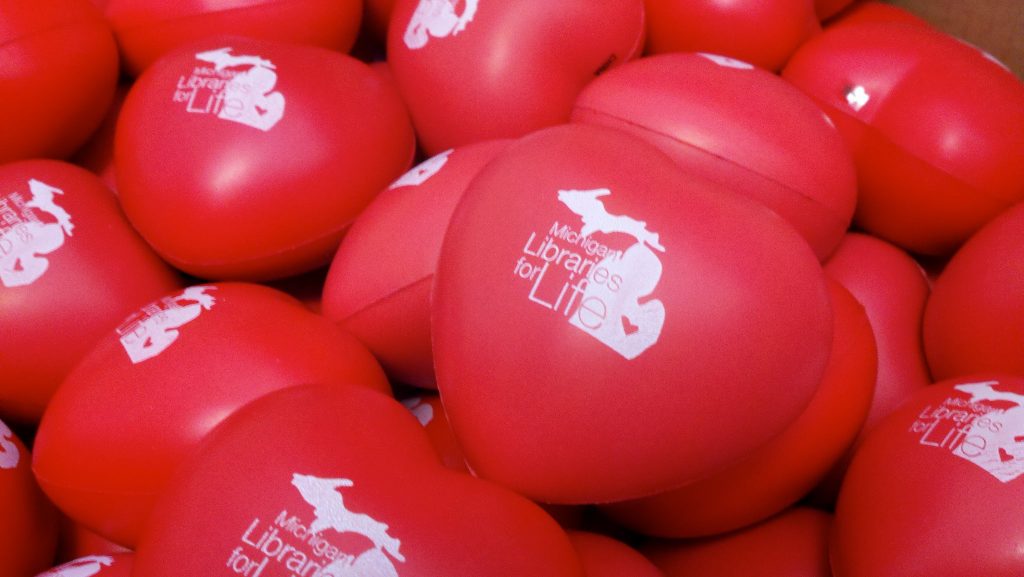
This year’s Michigan Libraries For Life donor drive runs from Thursday, October 10 - Wednesday, October 16, 2019.
For more information, including a map showing all the state’s participating libraries, visit librariesforlife.org. You can also sign up for the registry at giftoflifemichigan.org, by calling 866-500-5801, or at any Secretary of State office.
From archive to classroom
The students of Authorship & the Archives, a class in the Department of Film, Television, and Media (FTVM), spent the winter 2018 semester digging into the archive of film director, producer, and screenwriter Nancy Savoca. Her papers — which include notes, notebooks, photos, and draft script, and represent nearly three decades of indie filmmaking — became part of Screen Arts Mavericks & Makers collection in 2016.
With the help of librarians in the Special Collections Research Center, students navigated the finding aids to identify promising materials, and then began the fascinating, painstaking process of original research using primary materials. Some of this research was toward an exhibit, True to Life: Film Director Nancy Savoca’s Quest for Authenticity, which was part of a May symposium celebrating Savoca’s career.
They were among the first people to work in the Savoca archive, and being early in this case had an added benefit: Savoca herself, along with her husband and producing/writing partner Rich Guay, visited the class as guest lecturers, giving the students a chance to further explore their archival discoveries in conversation with the filmmakers.
More/LessKaris Blaker, a senior in the class, focused on the movie Household Saints (1993), which Savoca adapted from a novel by Francine Prose. So Blaker was particularly inspired when Savoca told the class that as an undergraduate herself, she’d written a letter to Prose after reading the novel. She “vowed to one day make a movie about it,” Baker says. “Prose kept the letter, and remembered Savoca when she reached out for the rights ten years later.” And within the archive, Blaker found letters between the two that document Savoca’s efforts to stay true to Prose’s story.
Blaker, who’s planning for a graduate degree that will rely upon archival work, knows this experience was special. “I feel lucky to have worked with her archive, and to have met her in person. Not every archivist gets the opportunity to meet with the people whose materials they are studying.”
by Lynne Raughley
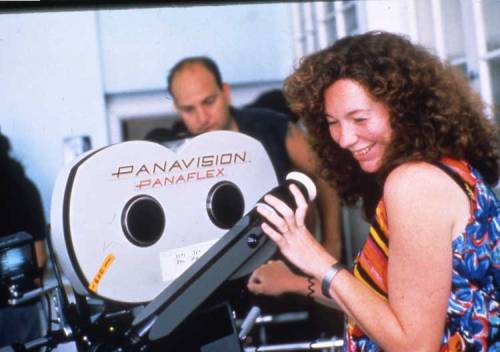
Nancy Savoca at work, in an undated photo
Special Collections Research Center
Summertime
With fewer students in our buildings during the long days of summer, visiting researchers and groups make the most of the relative calm.
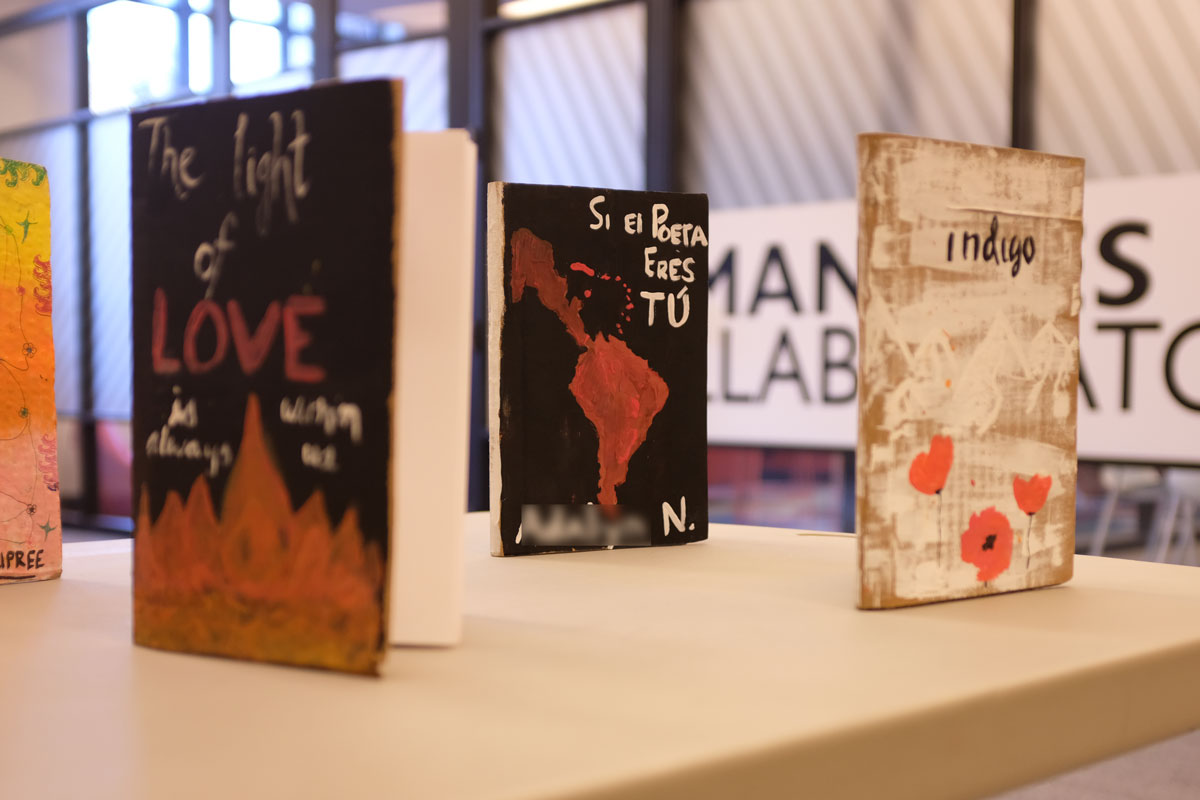
Photo by Lynne Raughley
Teens
A group of high school students who spent the summer at Michigan via the the Telluride Association Summer Program made many visits to the library to work with subject specialists; create prints in the Book Arts Studio; conduct research in Special Collections; find inspiration in the Computer & Video Game Archive, the Comics & Graphic Novels collection, and the Reference Reading Room; and attend a zine-making workshop in ScholarSpace. The finale was an evening of poetry and a popup exhibit of the work they created during their time at Michigan.
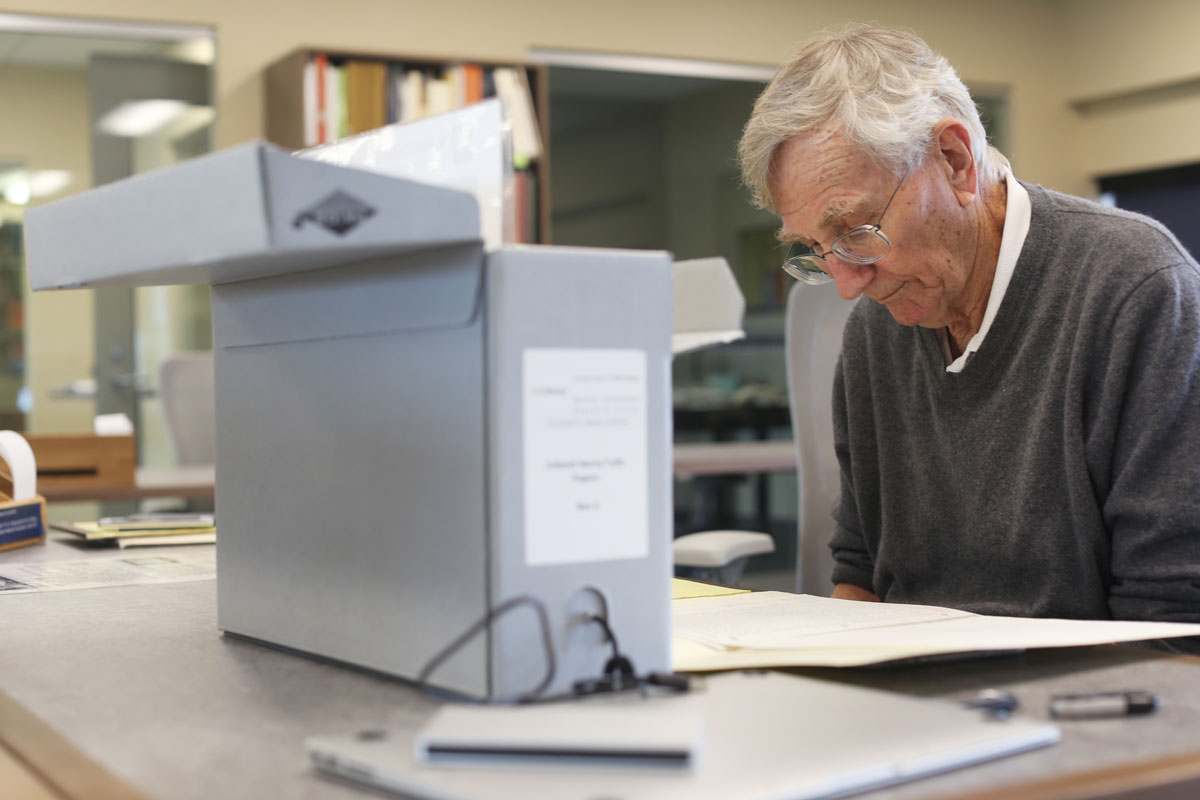
Photo by Alan Piñon
Researchers
Among the summer visitors to the Special Collections Research Center were several 2019 Heidrich Fellows, who receive support for projects that require substantial on-site use of the Joseph A. Labadie Collection, and investigative journalist and writer Seymour Hersh, who achieved fame after exposing the My Lai Massacre in 1969, and in 2004 broke the story of the American military's torture and abuse of detainees at Abu Ghraib prison in Iraq.
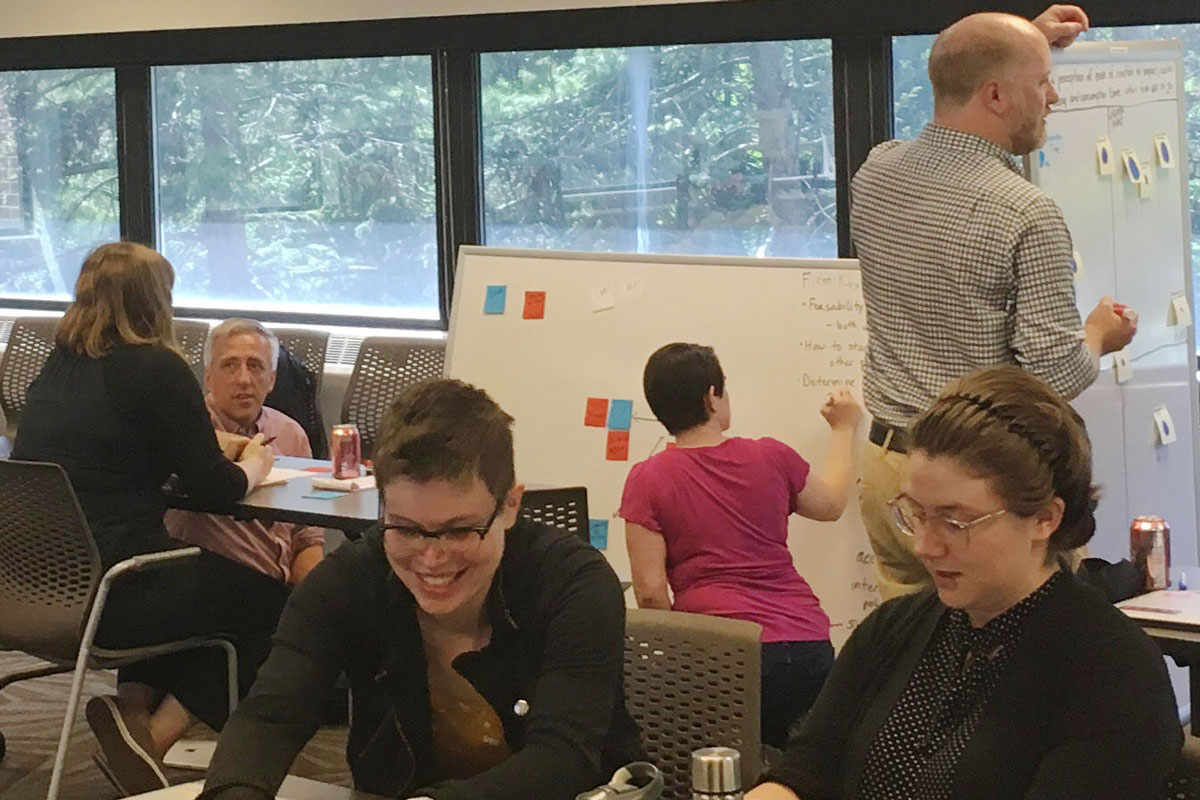
Photo by Justin Joque
Visionaries
The library hosted 13 fellows for a 3-day symposium around data visualization in libraries. The symposium was part of a grant from the Institute of Museum and Library Services aimed at developing a literacy-based instructional and research agenda. Among the fellows' project topics were Visualizing Spatial Uncertainty, Data Storytelling for Social Change, and Data Visualization + Empathy.
In the library, beyond the research paper
Rafe Neis’s winter 2019 course on sexuality in Jewish history and culture explored Jewish sexuality from antiquity to the present through a variety of conventional resources — medieval traditions, contemporary and historical writings, and sacred and mystical texts. But their engagement with the material pushed past convention into a variety of nontraditional assignments.
For the first half of the course, Neis, professor of history and Judaic studies, worked with Anne Cong-Huyen, the library’s digital scholarship strategist, and Meredith Kahn, librarian for gender & sexuality studies. Neis reached out before the semester began so the library could be involved in planning the curriculum and activities that would go beyond the traditional research paper.
First, Wikipedia
This exploration led to an interesting, and familiar, place: Wikipedia. Cong-Huyen and Kahn’s introduced the basics of Wikipedia, focusing on who creates and edits the content. Wikipedia is often a first source of information for students, Kahn said, and “it's important for us to remember that the vast majority of people who edit Wikipedia are white and male, and focus their editing on Wikipedia's English-language version. This means that it might not represent the history and lived experiences of marginalized communities very well. If we want Wikipedia to be better, we need to dive in and make some edits ourselves.”
Cong-Huyen and Kahn prepared the students to do just that by teaching them how to add content to Wikipedia and how to make sure their edits stick by using and citing authoritative resources.
For the next portion of the class, students were asked to combine visual and textual materials, be creative, and, sometimes, draw upon their own personal experiences to create a zine. Neis worked with Breanna Hamm, instructional technologist, and Evyn Kropf, librarian for Middle Eastern & North African Studies and Religious Studies, to teach students about zines and prepare them to create their own.
Zine research and making
First, a working definition: According to the Barnard College Zine Library, zine is short for fanzine or magazine; zines are self-published, and typically printed on paper and reproduced with photocopies. They are rooted in subculture, and often made by and for people in marginalized communities.
Hamm and Kropf began began by hosting a class visit to the Special Collections Research Center. With the guidance of curator Julie Herrada, students explored and got inspiration from zines in the Joseph A. Labadie Collection, an archive of radical and social protest materials from the 19th century to the present. Kahn and Herrada selected zines on Jewish perspectives, sex and sexuality, and representations of gender. Kropf offered insight on how to read and analyze zines by assessing how their physical characteristics — layout, design, and more — aligned with their content and message, to prepare the students to make their own.
Hamm worked with the students on the creation process and with Professor Neis on the assessment criteria. Given the nature of the class, they didn’t want to evaluate the zines on their artistic merit; and while they provided a rubric, Hamm pointed out that “zines are kind of anarchist in the sense that there really aren’t any rules,” so students were encouraged to push boundaries in service of the stories they wanted to tell. The students were graded on the reflections they wrote about how they approached and executed their projects.
The students visited ScholarSpace to learn about software they might use to plan and make their zines. Hamm talked about the history of zines, mood, and storytelling, and hosted four zine creation sessions to guide the students through storyboarding, composing, and building the physical zine.
The class concluded with a Zinefest in the Special Collections Research Center. Students brought their completed zines and presented their topics to the class, and to the librarians who had been involved in their semester.
By incorporating both Wikipedia and zines — one very fact-based, and the other more creative and experience-based — the course offered students two distinct approaches to studying historical and scholarly materials, and new modes of processing and incorporating what they learned into their own work. Kahn said, “Both relied on students working within a set of boundaries and constraints, and required them to put those constraints aside when necessary. This feels entirely appropriate for a class on the history of Judaism, one that shows how Jewish communities navigated change over time, responded to and influenced the places they lived, and found many ways to ‘be’ and ‘do’ Jewish.”
by Danielle Colburn
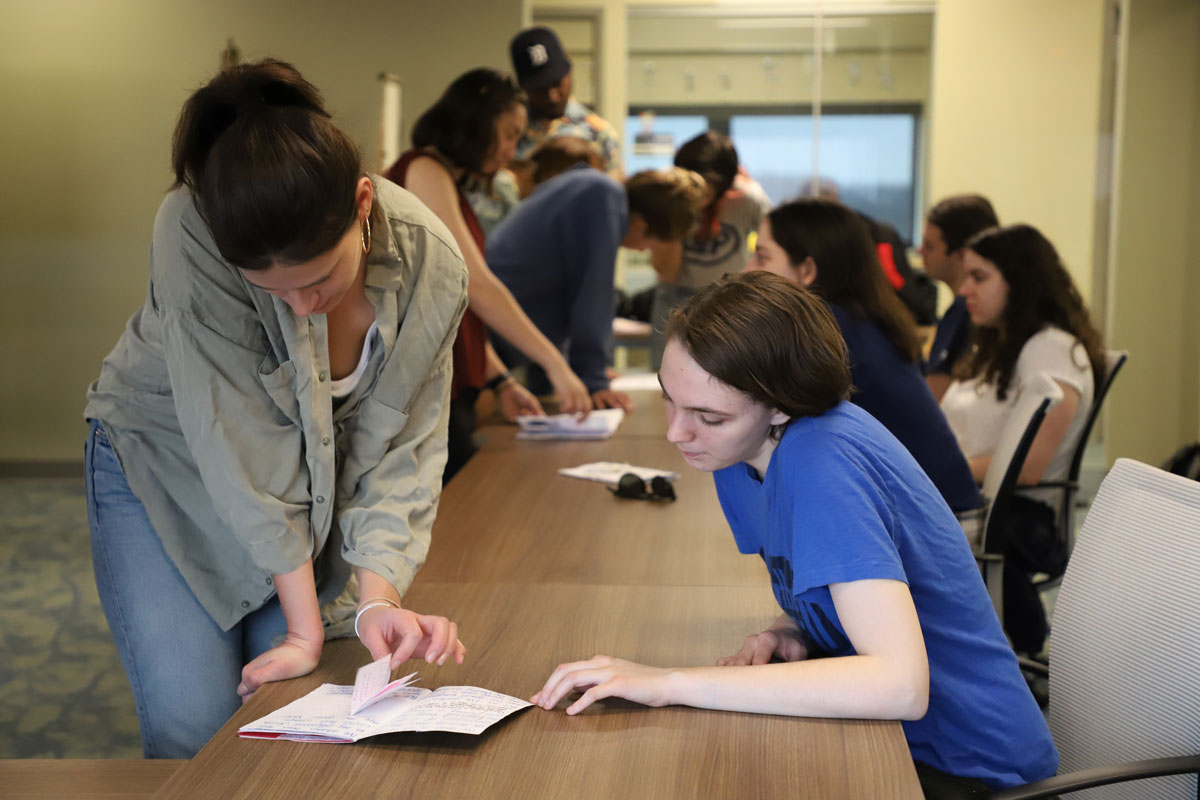
Students sharing zines in the Special Collections Research Center
Photo by
Collections, online
American history as lived experience
The online exhibit Scrapbook of American History: From the Revolution to the Civil War, curated by students in History 260: United States to 1865, offers a glimpse into the lived experiences of Americans living in a century highlighted by the American Revolution and the Civil War.
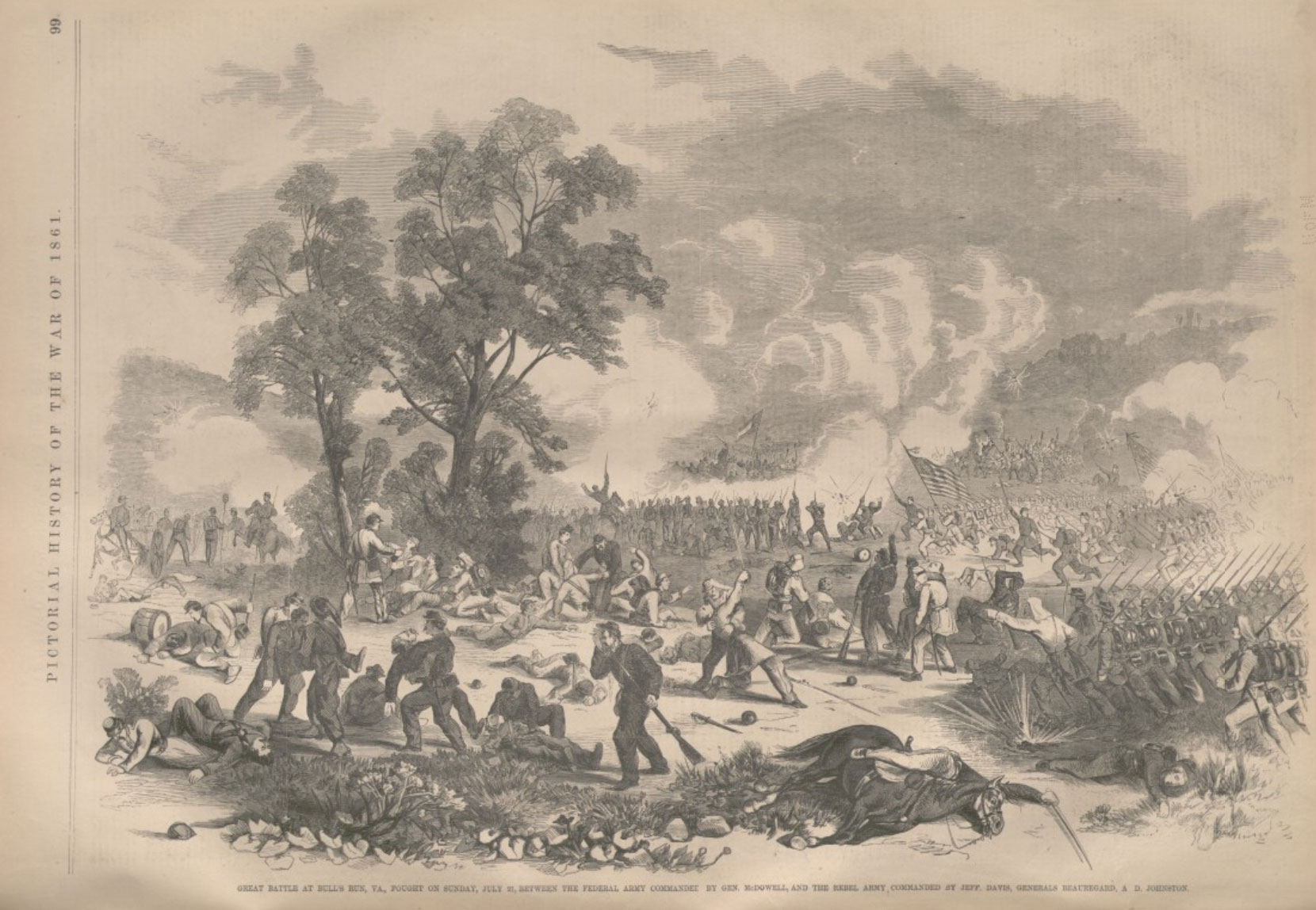
Great Battle at Bull's Run, VA, from Frank Leslie's Pictorial History of the American Civil War
The Grand Hotel
The Grand Hotel, a historic landmark on Michigan's Mackinac Island, is well-known for, among other things, hosting many a famous guest since it opened in 1887 — among them Mark Twain, and five U.S. presidents.
A new digital collection offers historical images from the Bentley Historical Library's Grand Hotel Series, including documents, photographs, audio, and videographic material collected by the hotel's management. The more than 2,200 images cover the period from 1855-2004, and the collection is organized into 5 categories: Hotel Amenities, Scenery and Unidentified Events; Events; People; Construction and Remodeling; and Miscellaneous.
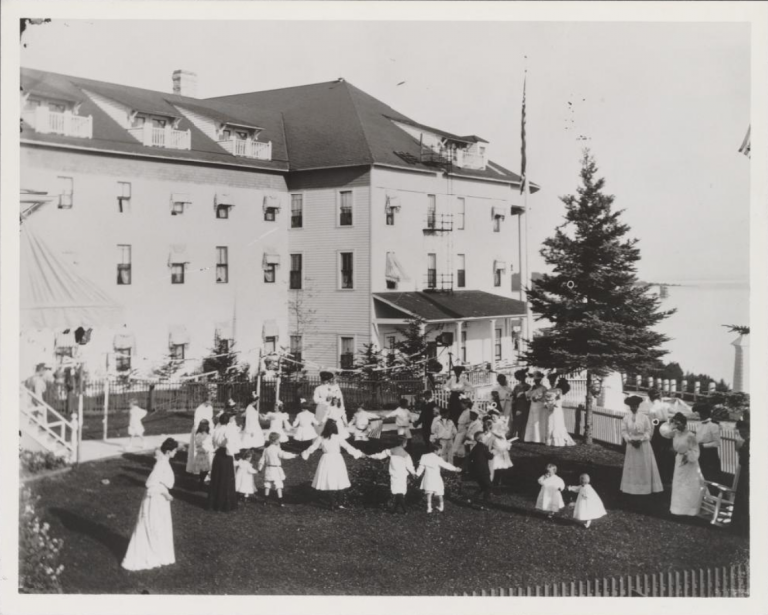
The Grand Hotel, pre-1920 | The Bentley Historical Library
Image gallery
To celebrate commencement with the class of 2019 and their families, the library offered photo opportunities on the Diag, in front of Hatcher Library, featuring the proud block M of their forever alma mater.
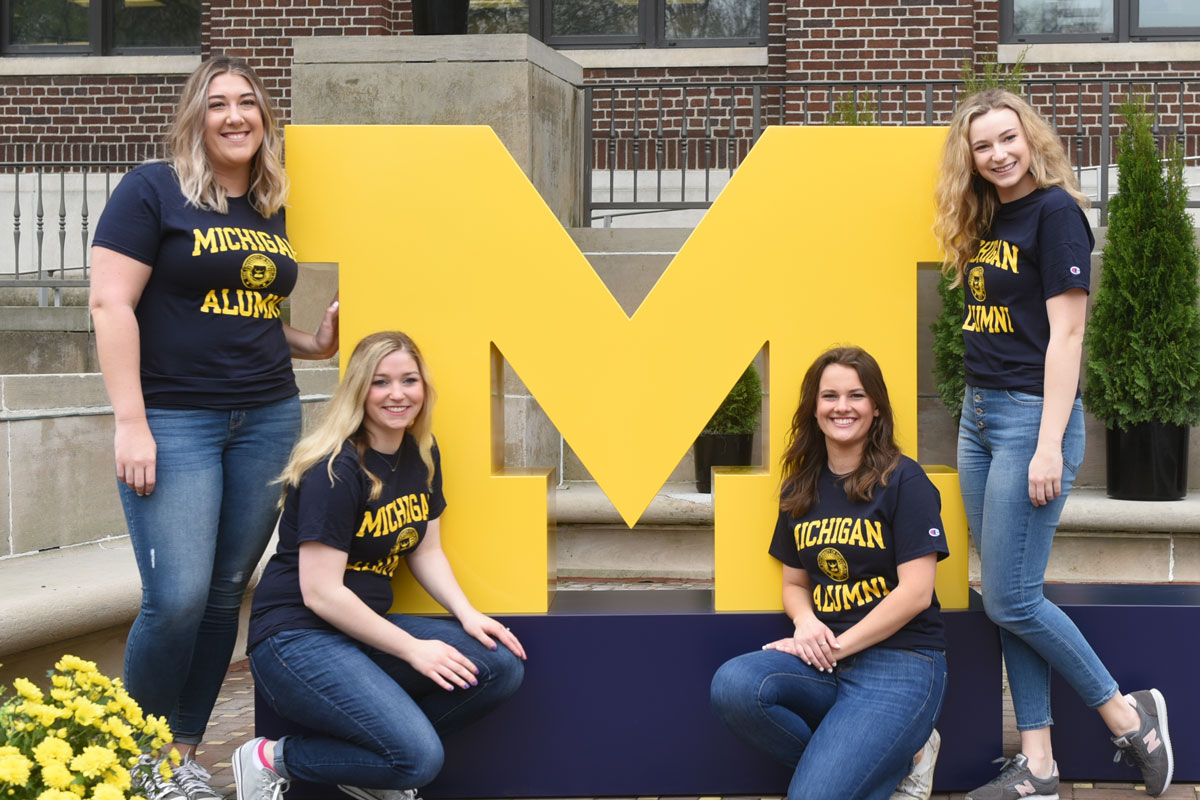
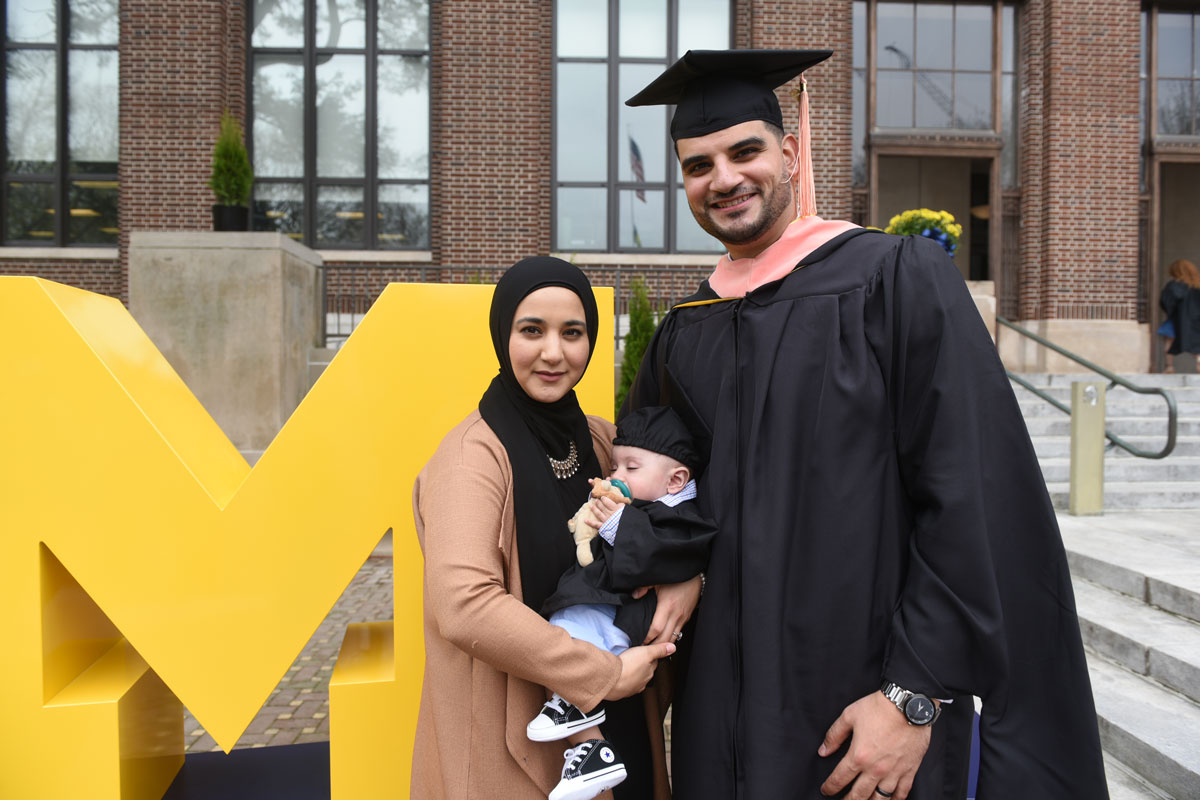
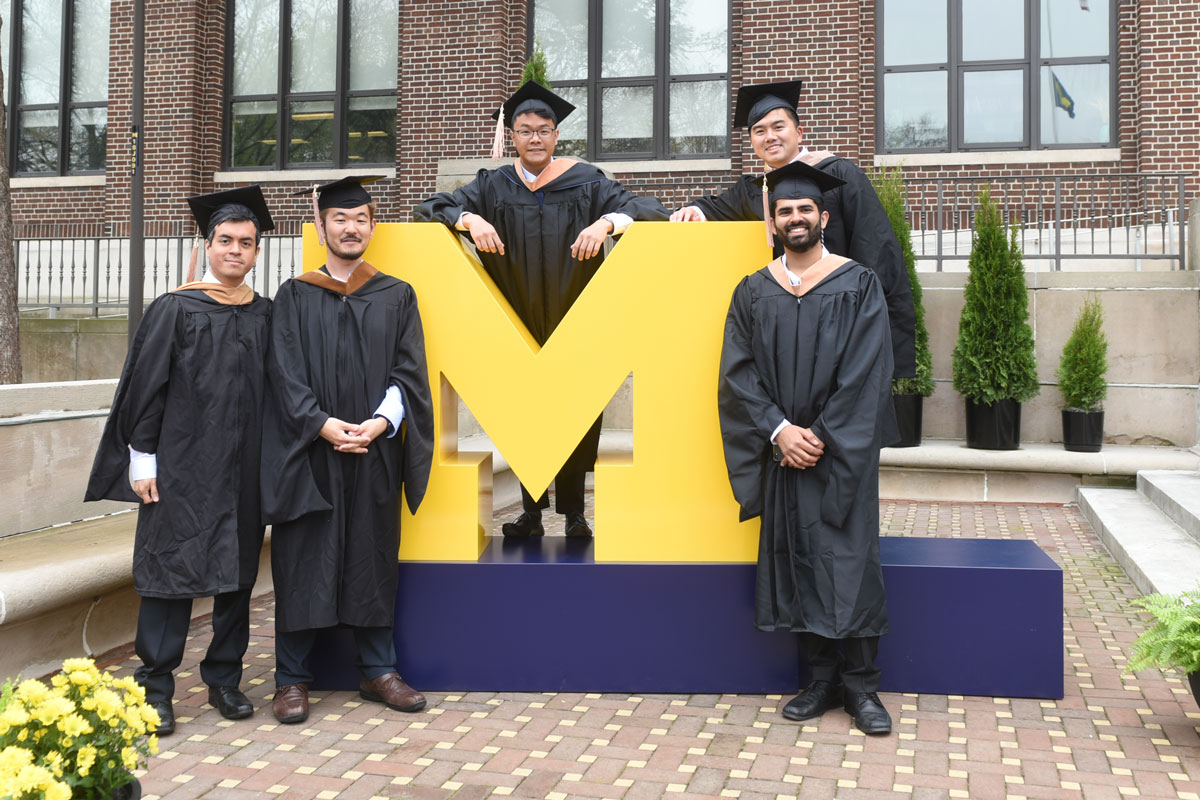

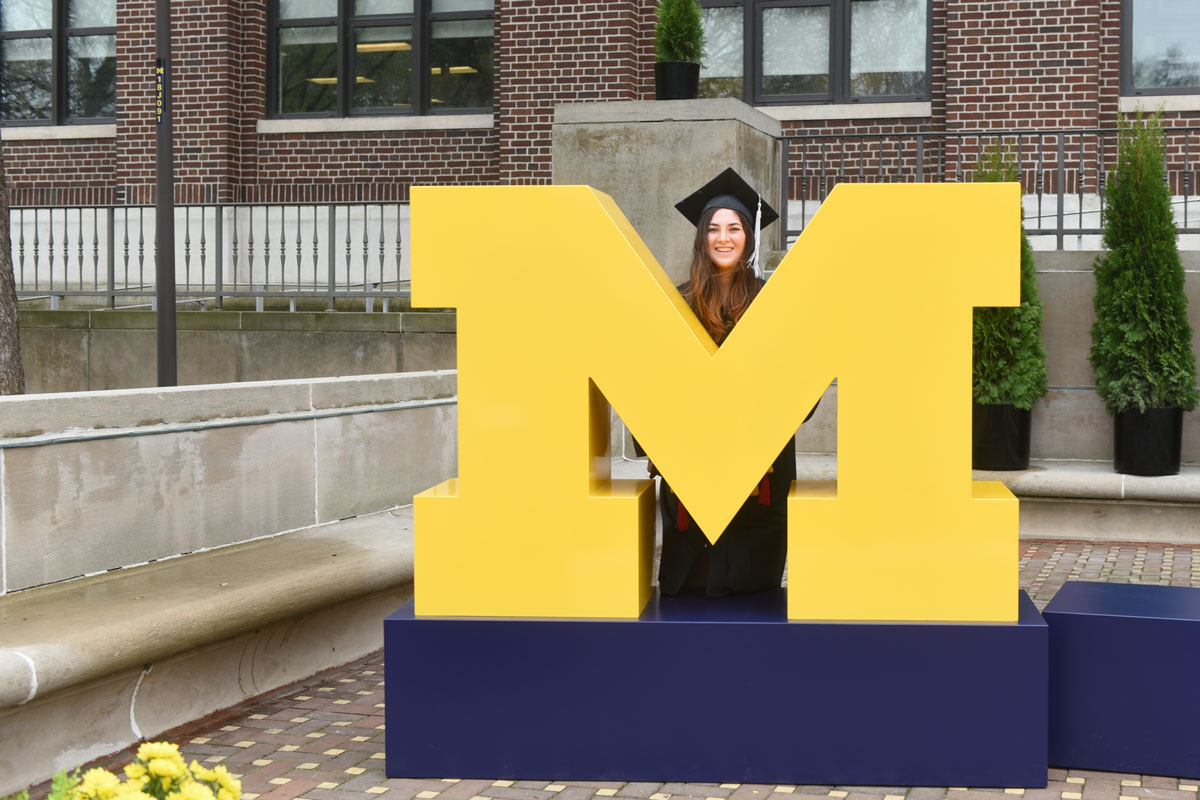
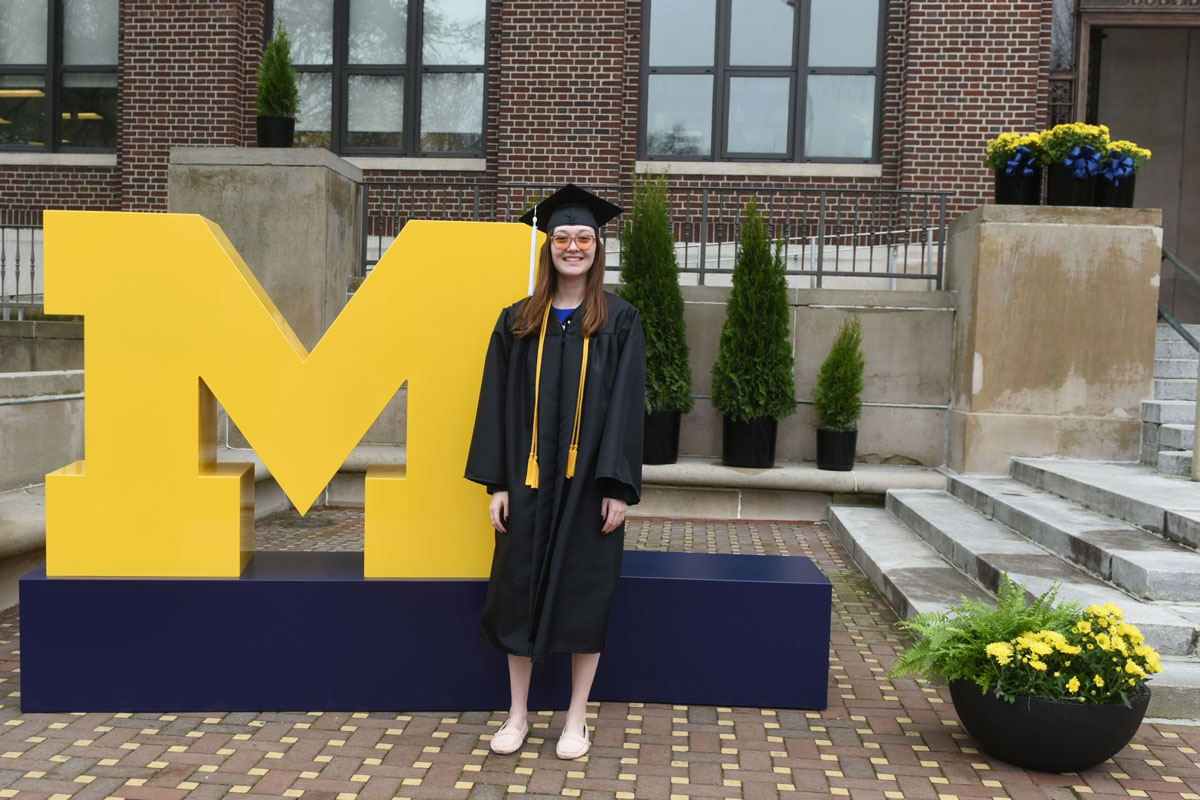
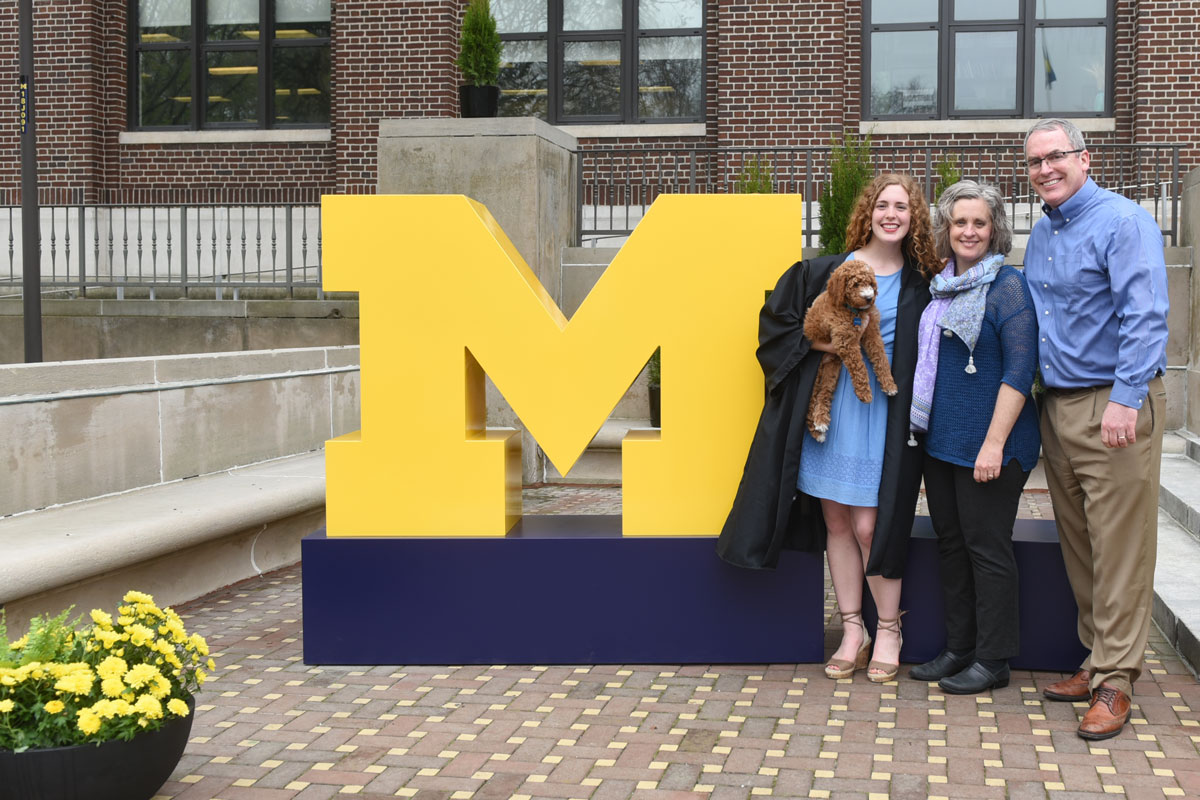
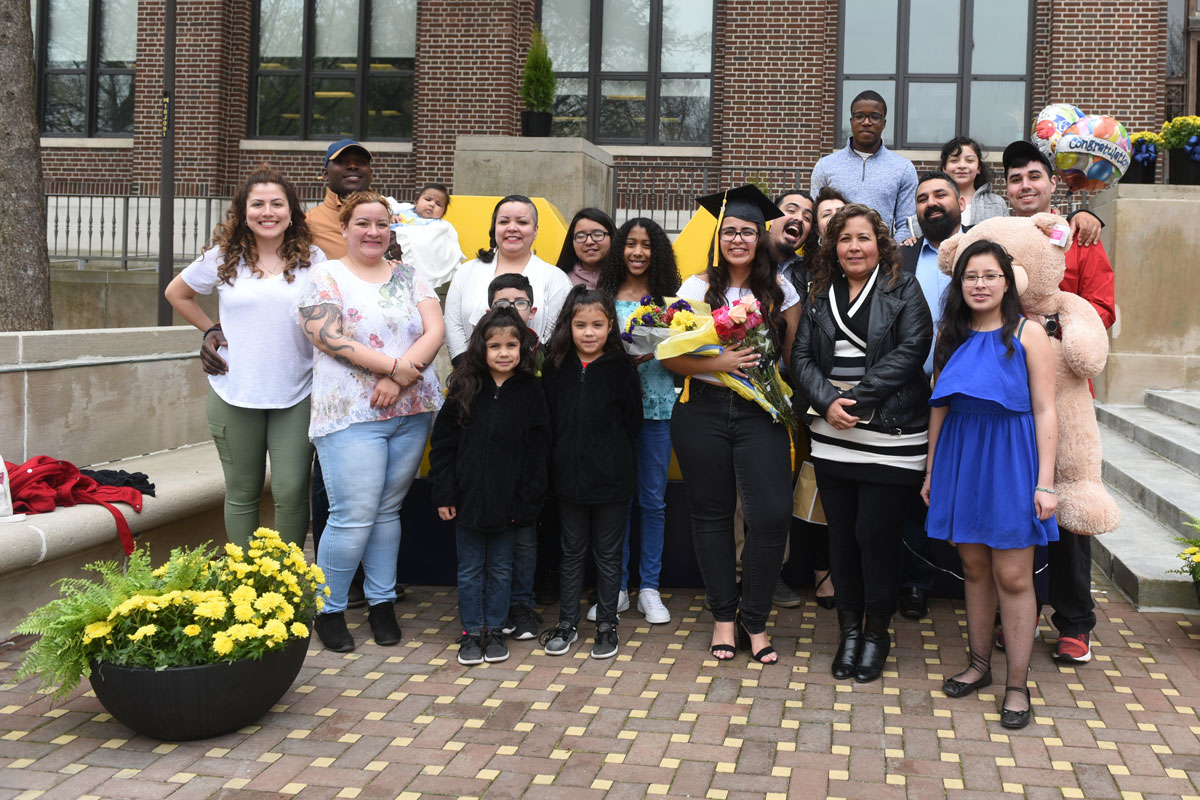
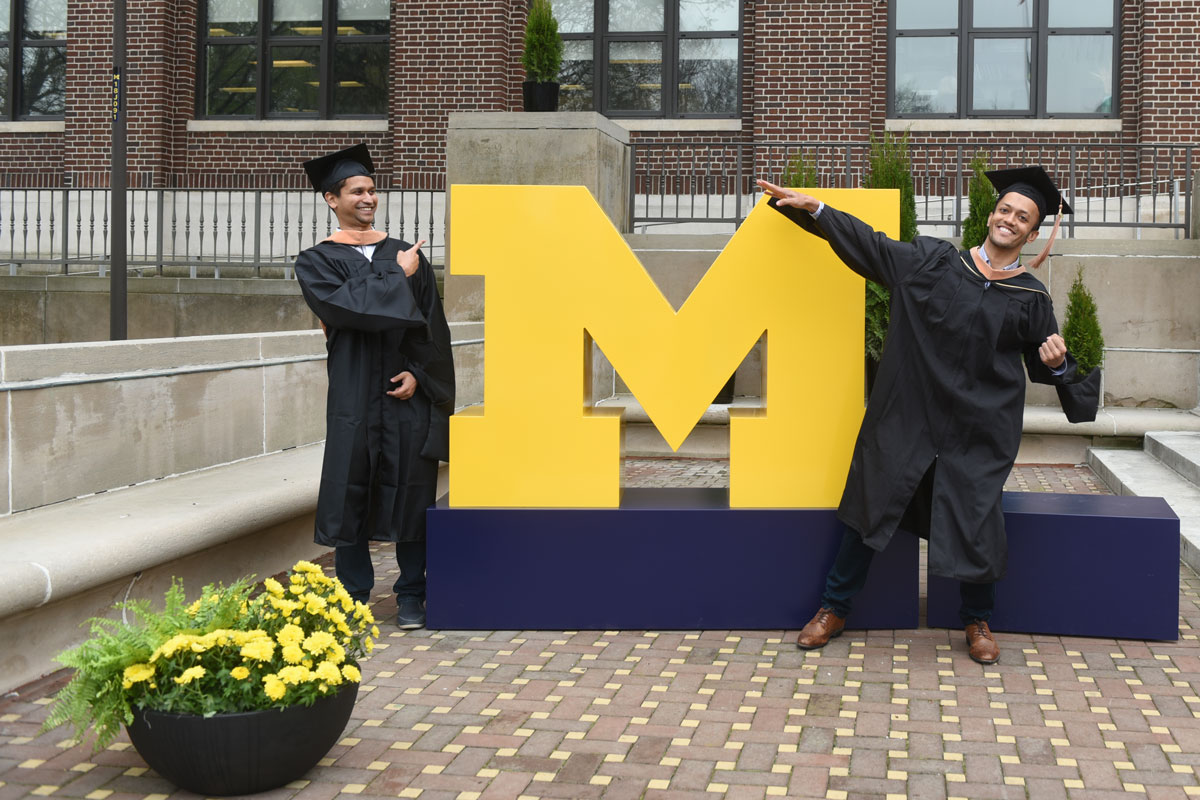
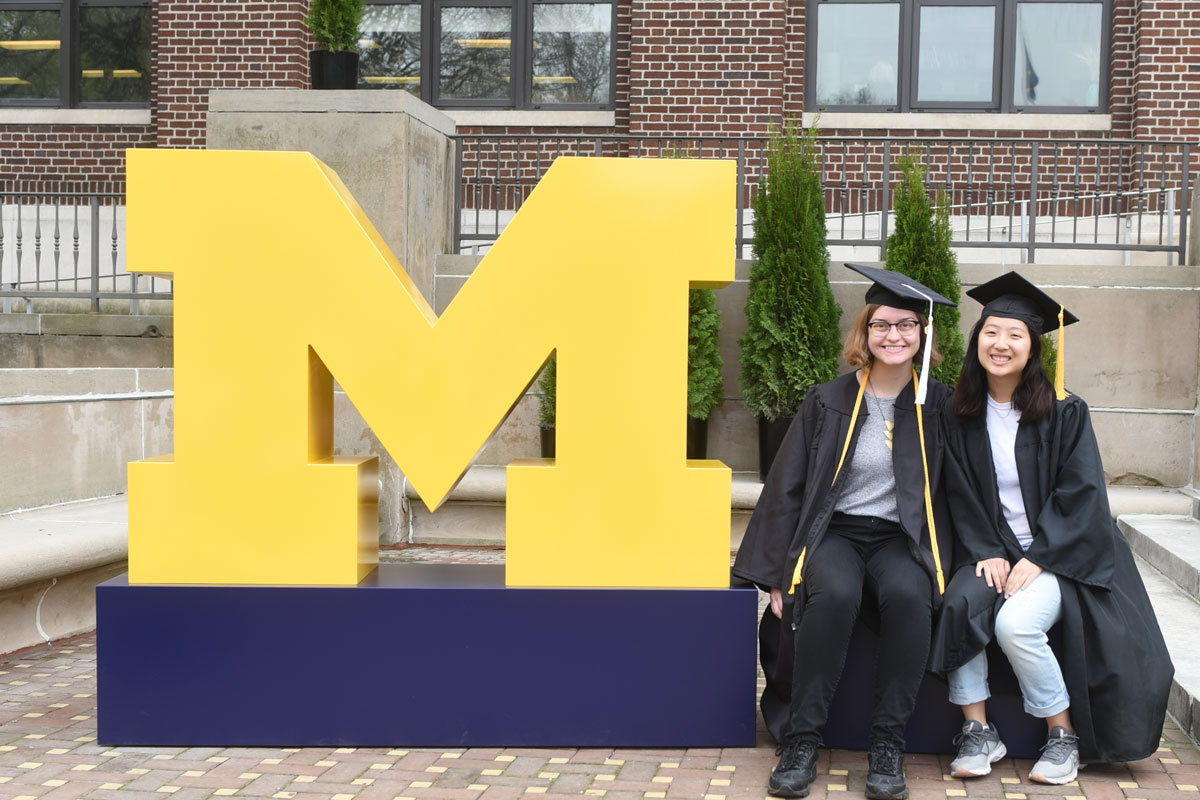
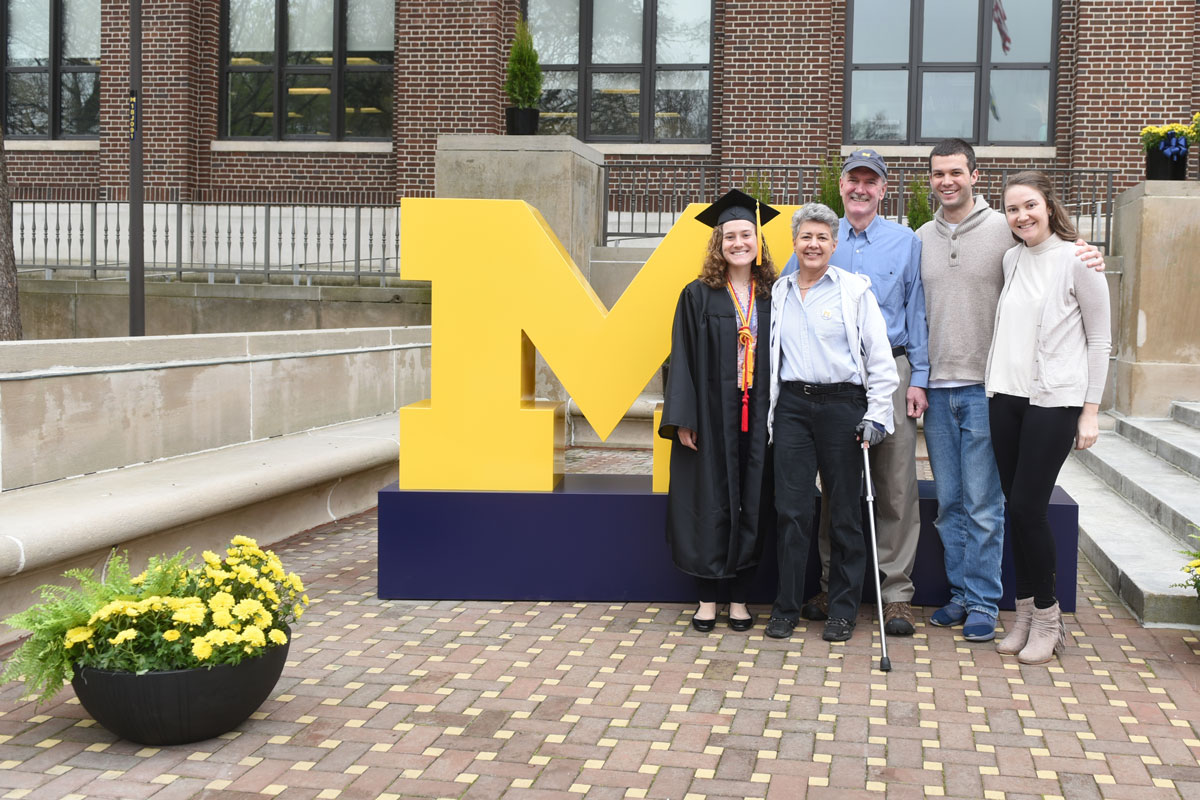
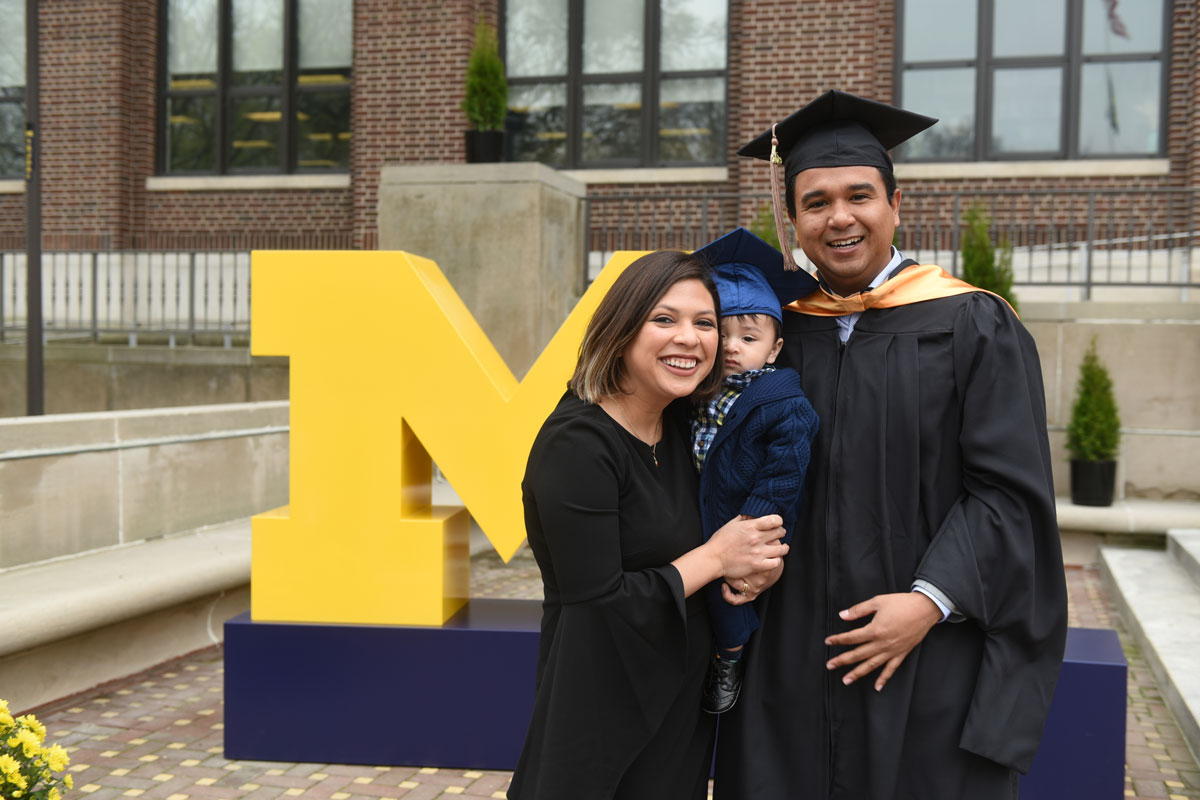
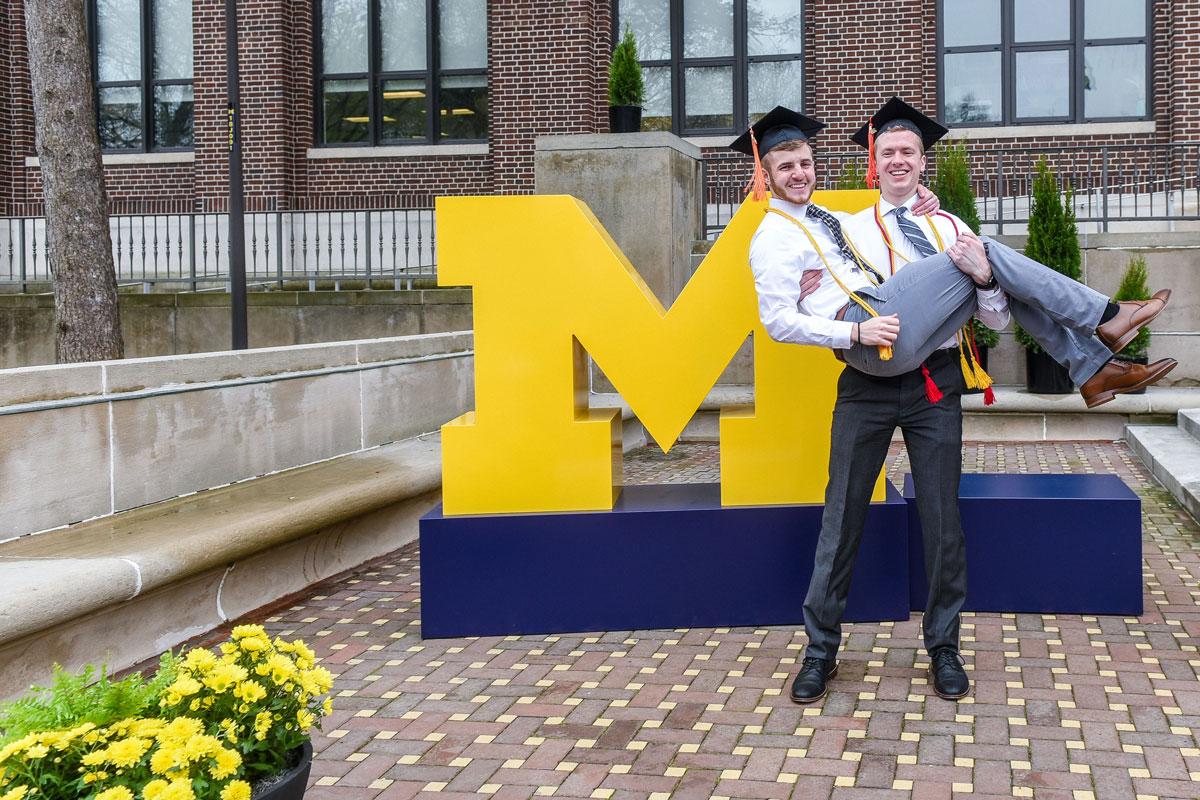
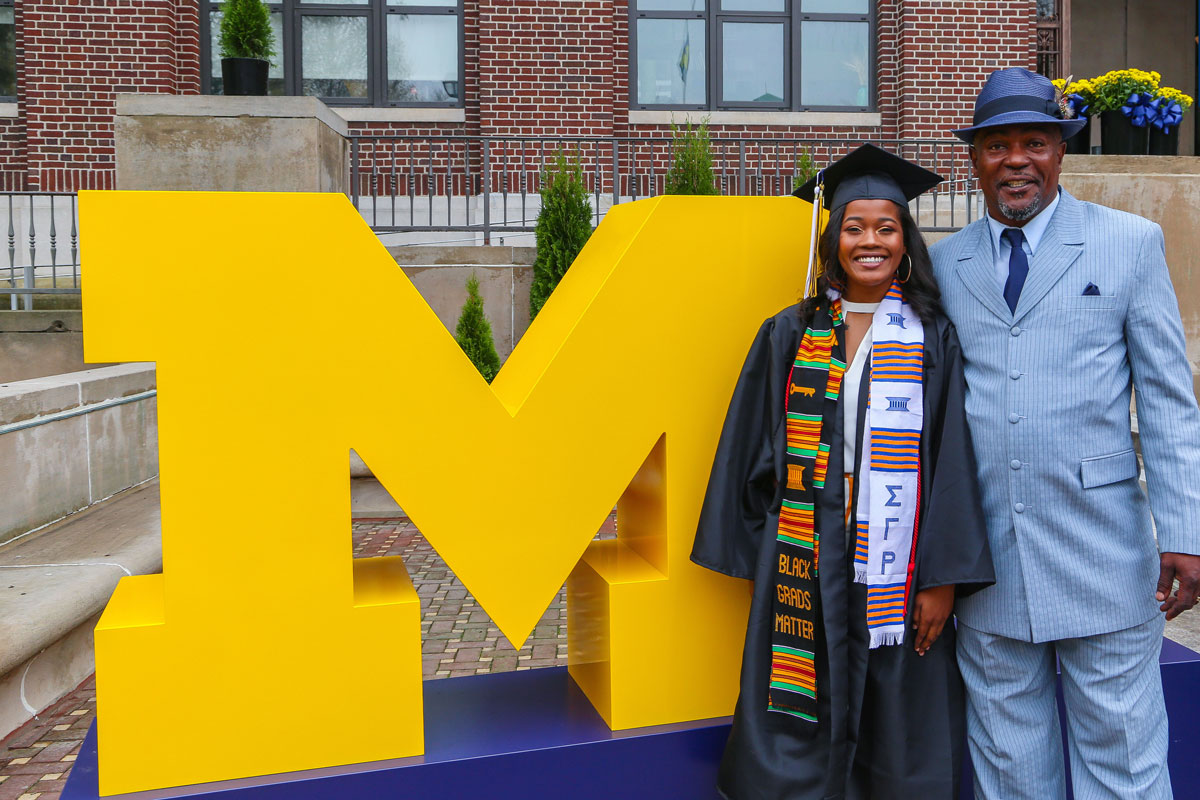
Photos by Melissa Squires
Featured blog post
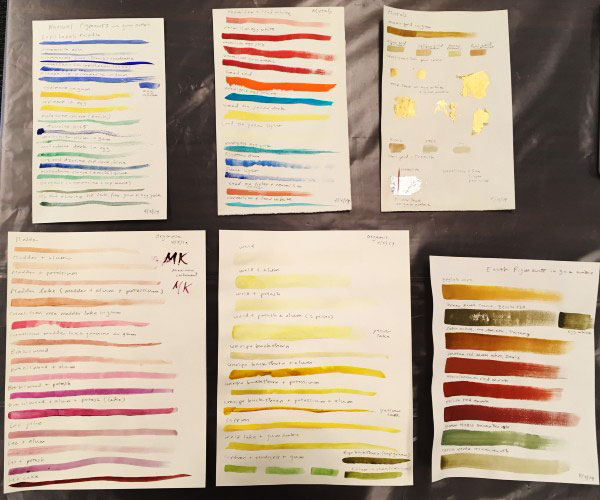
Photo by Marieka Kaye
In April, the Special Collections Research Center hosted a hands-on workshop, Re-Creating the Medieval Palette, taught by world-renowned book and paper conservator Cheryl Porter. The workshop, which included participants from the Stamps School of Art & Design and the History of Art department, explored and recreated the colors used in the Islamic and European manuscripts of the medieval era.
Current & upcoming exhibits
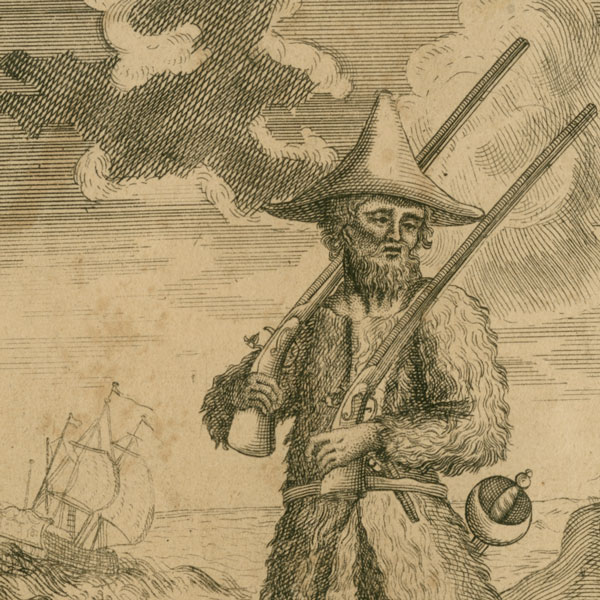
Other Crusoes, Other Islands
See Other Crusoes, Other Islands: Mapping a Complex Legacy in the Audubon Room, Hatcher Gallery | September 16 through December 17
Three hundred years after the publication of Robinson Crusoe, this exhibit draws on the Hubbard Collection of Imaginary Voyages — one of the world’s most comprehensive collections of Crusoe editions, translations, adaptations, and spin-offs — to interrogate the troubled legacy of Daniel Defoe’s seminal novel, and explore how some have pushed back against the colonialist, hyper-masculine, and racist ethos of the text.
Content advisory: Some items in this exhibit feature racist imagery and potentially painful content. Although this exhibit includes children’s books and board games, it is not geared towards children.
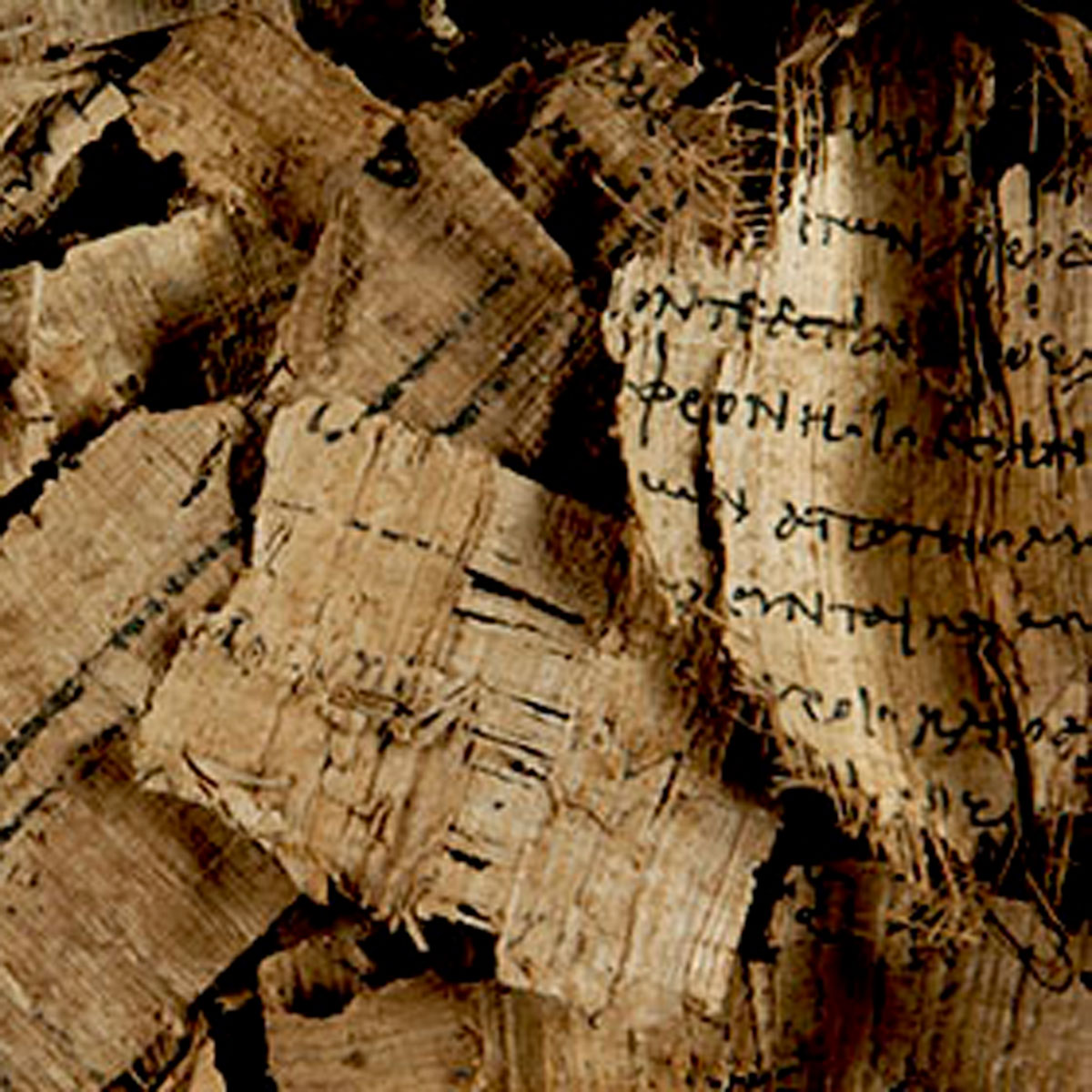
Literature in Fragments
See Literature in Fragments: Lost Greek Works at Michigan in the Special Collections Research Center, 6th floor Hatcher | October 8 through December 6
This exhibit presents a selection of fragmentary literary texts from our Papyrology Collection, some from well-known works of ancient literature, and others that offer a tantalizing glimpse at works that were read in antiquity but did not survive intact into the medieval and modern periods.
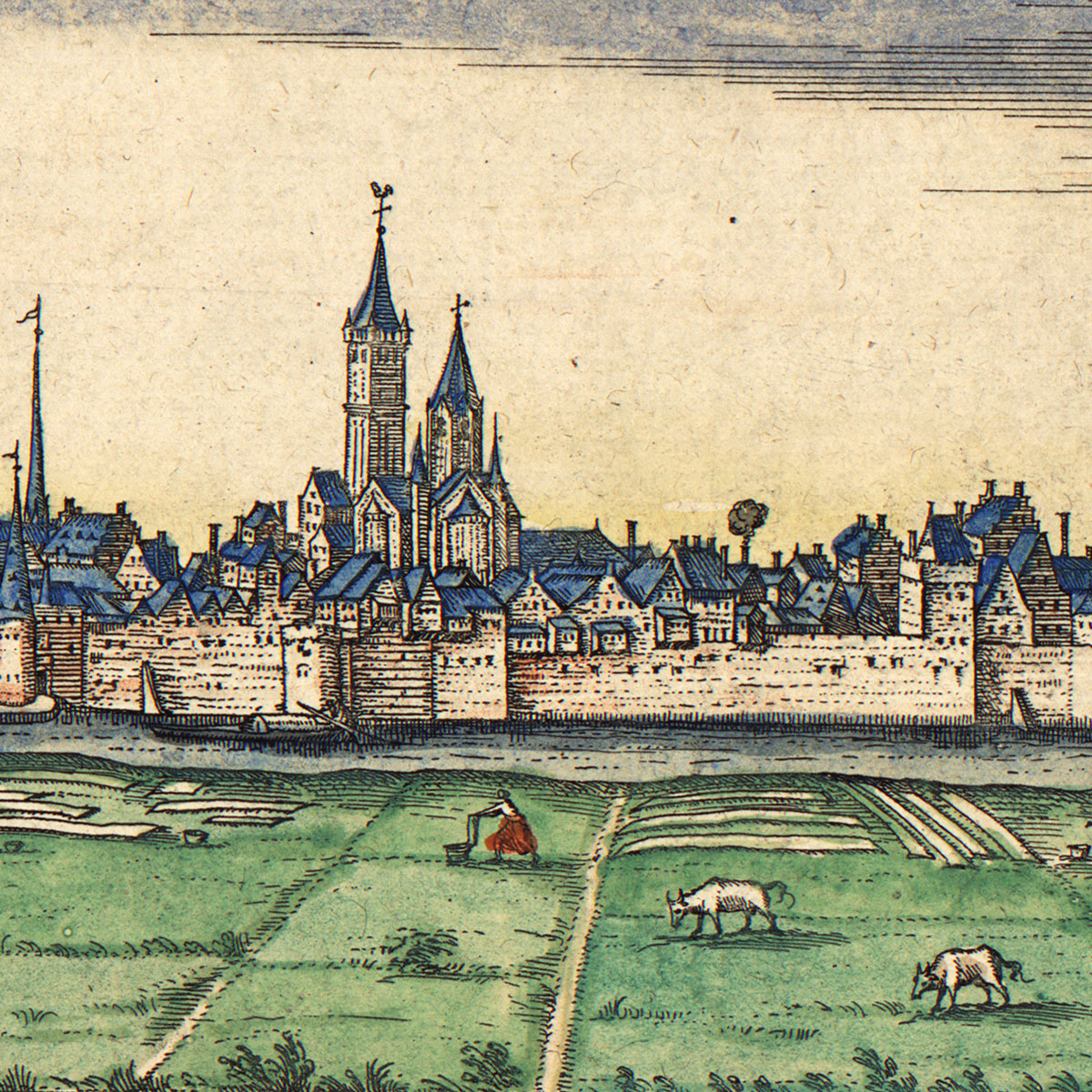
Civitates Orbis Terrarum
See Civitates Orbis Terrarum: Braun & Hogenberg’s Evolving World in the Clark Library, Hatcher | through December 24
This exhibit features works from Civitates Orbis Terrarum (Cities of the World), the first standardized city atlas first published in 1572, as well as reproductions of large panoramas of Amsterdam, London, and St. Petersburg that reflect the evolution of city mapping through the 17th and 18th centuries.
Check our Upcoming Library Events on a regular basis and sign up to receive our weekly exhibits & events email.

